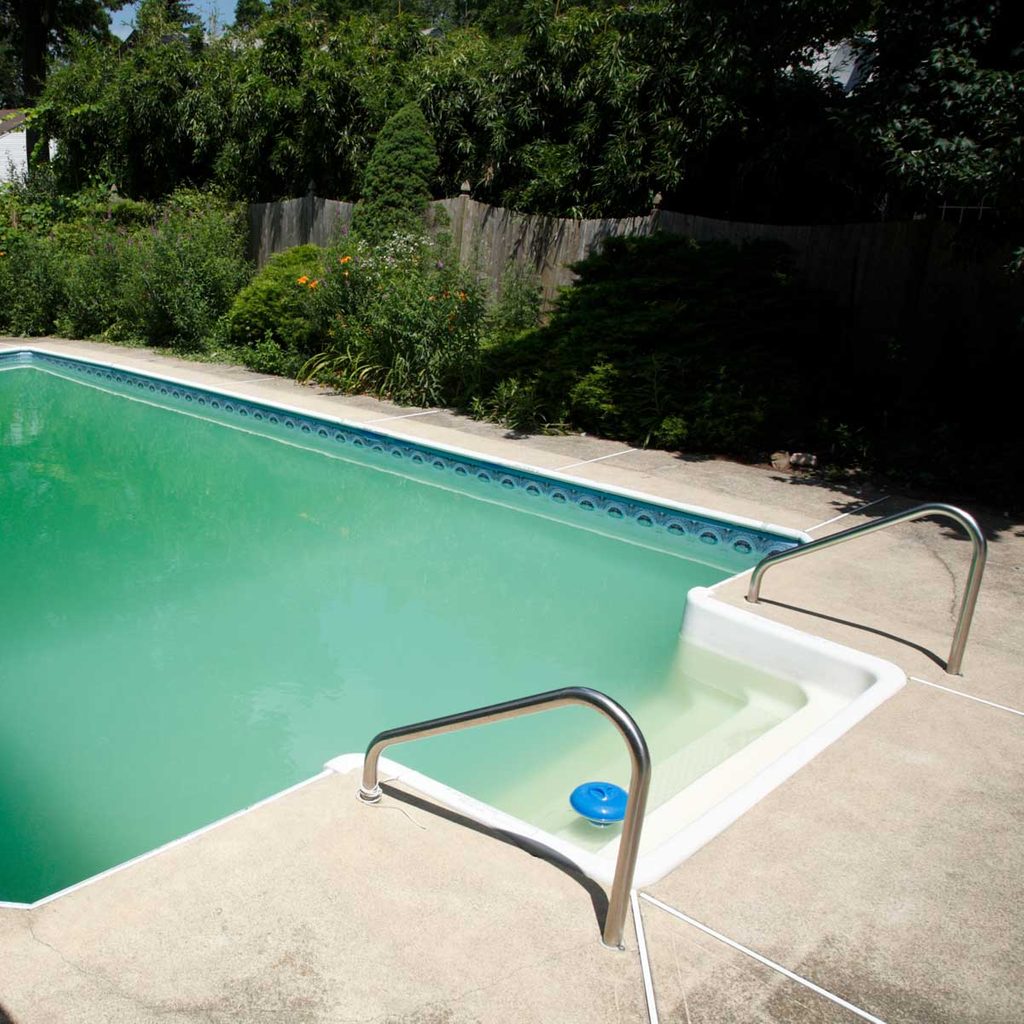What Makes a Pool Turn Green and How Do I Fix It?
Updated: Jan. 12, 2023

Learn about the five most common causes of green pool water and how to fix a green pool for good.
A green pool is usually caused by one of five underlying problems. Here’s what they are, how to remedy them and how to keep your pool from going green again.
On This Page
Not Enough Chlorine
Algae growth turns a pool green, and algae grows when pool water lacks chlorine.
A pool’s free chlorine level should be between two and four parts per million. If a chlorine test, such as PoolmasterSmart Test 4-Way Swimming Pool and Spa Water Chemistry Test Strips, reveals a lower number, add more chlorine to the pool water until it’s in the desired range. Monitor chlorine levels more closely in the future to keep your pool water algae-free.
Too Much Cyanuric Acid (CYA)
Cyanuric acid (CYA) is a water conditioner and stabilizer that prevents chlorine from degrading in sunlight. The CYA level in pool water should be between 30 and 50 parts per million. Any higher means trouble. “Once you get around 80 to 100 parts per million or more, the chlorine can no longer do its job effectively,” explains Steve Goodale, a writer and technical specialist who reaches millions of pool and spa owners each year through his Swimming Pool Steve resource blog and YouTube channel.
Find out your pool’s CYA level by taking a water sample to a pool and spa store so they can properly test it. CYA is hard to remove from water. Often the only way to fix the problem is to partially drain the pool and refill it with fresh water.
Going forward, watch how many chlorine pucks you add to your pool, because they also contain CYA. You can also consider ditching the pucks and adding chlorine as a standalone product if elevated CYA is an issue for your pool. (As a reminder, a pool’s free chlorine level should be between two and four parts per million.)
High pH Level
Your pool should have a pH level between 7.4 and 7.6. If it reaches 8.2 or higher, chlorine becomes mostly inactive. “This is a common problem that can happen with any pool, but is especially common with saltwater pools,” says Goodale. That’s because saltwater pools generate chlorine that will cause a high pH if you’re not keeping a close eye on things. You can test your water’s pH regularly, but know that many test strips are not ideal for testing pH because they do not test beyond 8.2.
A better bet is to have your water tested at a pool and spa store or purchase a Taylor FAS-DPD Test Kit for a more accurate at-home pH test. If the pH is too high, you can either add borates such as ProTeam Supreme Plus as a one-time treatment, or regularly treat your water with acid such as HTH pH Decreaser to lower the pH.
High Phosphate Level
Phosphates are compounds that Goodale calls “super food for algae.” They commonly find their way into pools from detergents and fertilizer runoff. When phosphate levels in your pool go above 500 parts per billion, the chlorine struggles to do its job. Most pool water tests don’t test phosphates levels, so ask a pool and spa store to test for them or buy test strips, such as Ets Hach Company Phosphate Test Kit. If your phosphate level is too high, use a phosphate remover, such as Clorox Pool & Spa Phosphate Remover.
Not Enough Filtration
Goodale says many people don’t run their filters enough, which leaves too much organic debris in the water.
“A residential pool filter should run enough to filter the volume of the pool at least three times every 24 hours because not 100 percent of the volume gets filtered each time,” he says. “After three times, 95 percent is filtered, which is acceptable.”
